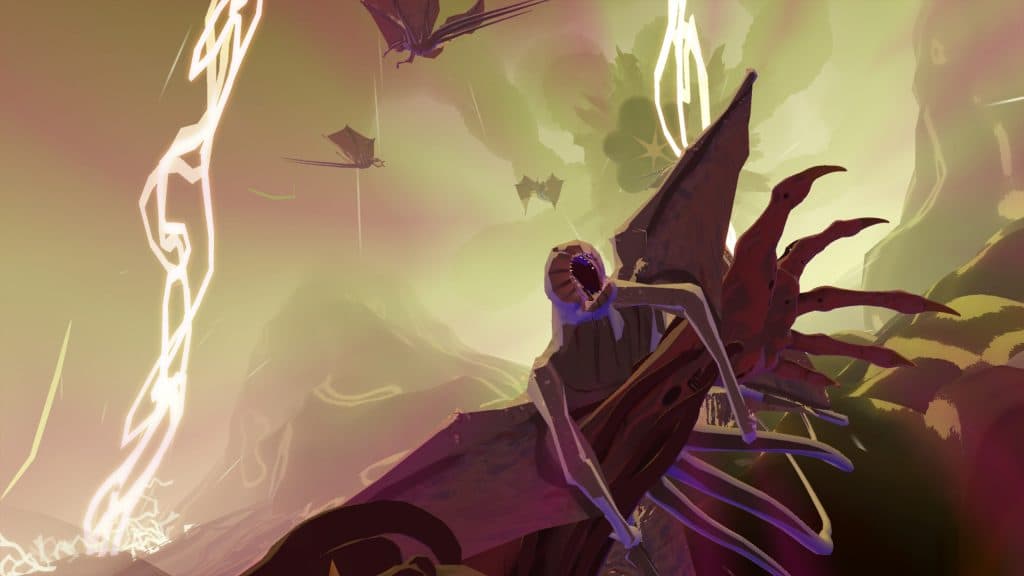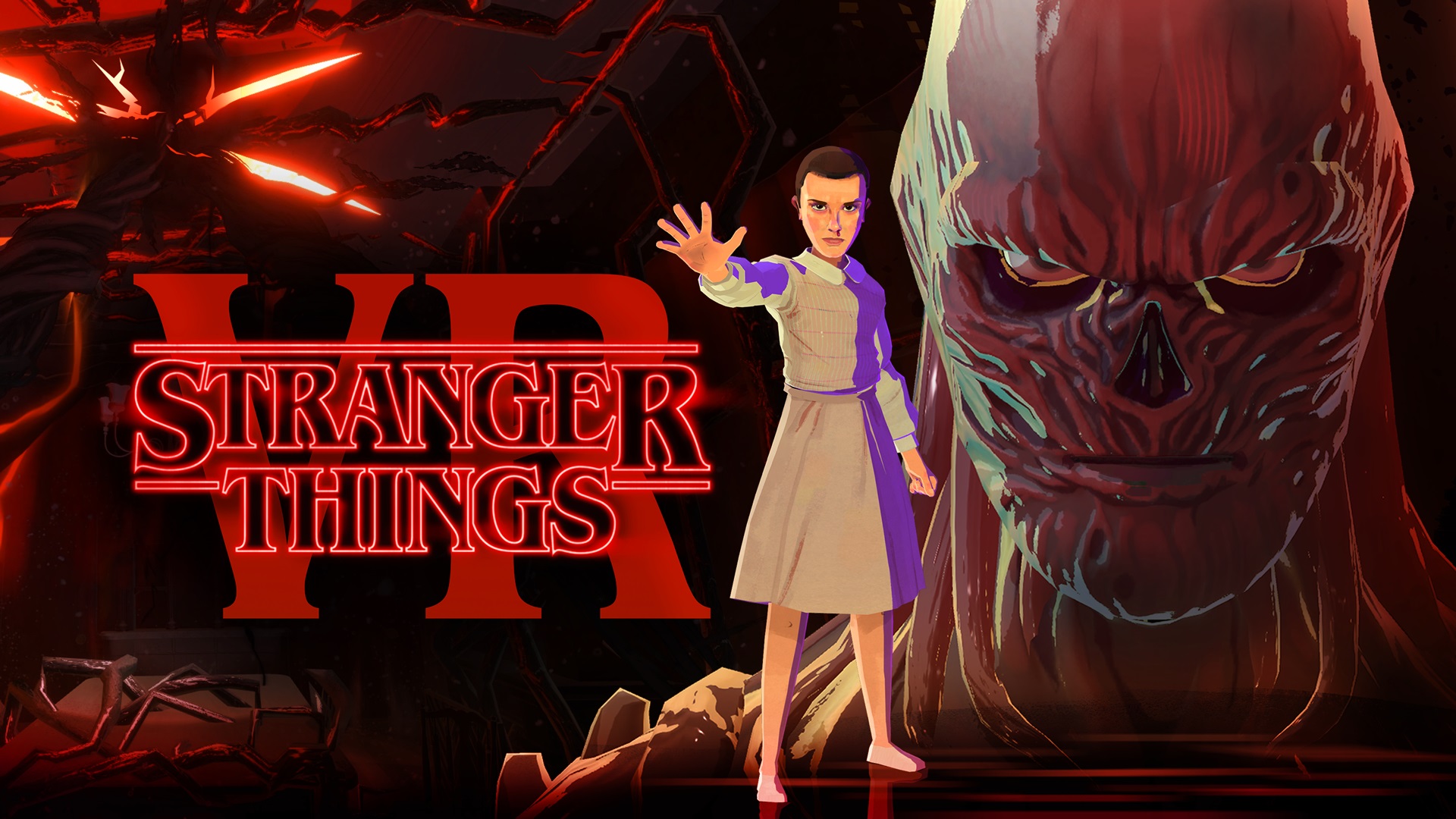Stranger Things has become a huge hit for Netflix, offering an interesting mix of 80s nostalgia with mystery and horror. How does that experience translate into a VR game?
Horror is one of those things that tends to work particularly well in VR. Something about the isolation of being ensconced in a headset and immersed in the virtual world lends itself particularly well to scaring the pants off you.
Stranger Things often has otherworldly locations like the bizarre and sinister ‘Upside Down’ that translate well into VR. Those who are not up to date with the series should beware of spoilers, and those not familiar with the show at all will have no idea what is going on. This one is for the fans.
Key details
- Price: $29.99
- Release date: February 22, 2024
- Developer: Tender Claws
- Platform: Meta Quest
The story re-told
From the very start, Stranger Things VR is up-front about being a title that is designed for fans of the series. Those who have not watched all four seasons of the show will be confused at best. The game relies on familiarity with the characters, events, and settings of the TV show in order to weave the story.

What this means in practice is that the main story beats from seasons three and four of the TV show are re-told from a different perspective. Though curiously, the story is not told in chronological order, rather working backward from a huge season four plot reveal, and fleshing out the rest as you play.
As the player, you take the role of arch-villain Vecna, where you are stranded in the twisted world of the Upside Down and tasked to find your way out, haunted by fractured memories as you attempt to do so. Your main tools to do so are Vecna’s mental powers of telekinesis and telepathy. You must navigate through the complicated maze-like landscape and solve puzzles using your powers, encountering other creatures familiar from the show, such as the Demogorgon and Demodogs.
Immersed in a surreal world
What Stranger Things VR does particularly well is capture the surreal and unsettling nature of the Upside Down. The visuals are appropriately stunning while also being suitably twisted and off-putting. The world is very stylized, at times resembling a peculiar pastel painting like something by artist Roger Dean.
Despite the visual feast, the overall gameplay quickly loses its appeal. You find you are doing the same things over and over, not really learning anything new. There is a paradox in that Stranger Things VR relies on extensive knowledge of the show, and yet seems unable to showcase anything truly different or revelatory.
Switching perspectives
It was somewhat disappointing when the game pulled you away from Vecna to instead put you in the roles of other various characters from Stranger Things. Bizarrely, this shift in narrative and gameplay comes about halfway through the game, just as you are very comfortable with how everything works. This sudden shift is immersion-breaking, as you are left scrambling to figure out who you are playing now and what their abilities are.
The result of this change is that you are pulled out of the immersion, and made to feel as if you are more of a passive viewer, being picked up and dropped in front of different scenarios and left to figure out what to do. This does spoil the feeling of agency, which hampers the game’s narrative flow.
Out of the available playable characters, only Vecna and Eleven felt fun to play, as they had a suite of skills the rest of the cast lacked. The biggest frustration lands when you’re ripped away from control right as you get your head around interesting traversal mechanics as Vecna, which is a huge shame.
Mixing the worlds
In addition to the main experience, there is a bonus Mixed Reality chapter that combines the real world with elements of the Upside Down. This is one of the better aspects of this game, and the blending of reality is very nicely done and ends up being loads of fun. So, it’s a shame that those moments are so brief.
Another great aspect of Stranger Things VR is the music, sound design, and vocals. The music is appropriately eerie and seems to incorporate elements of the soundtrack of the TV show. There is real care expressed in the music and sound design in a way that makes the Upside Down and beyond feel appropriately unwelcoming.
The vocal performances are likewise excellent, since the characters are voiced by their TV show actors, there is none of the jarring feeling you get when a beloved character is replaced by a sound-alike. The overall result means that the feel and atmosphere of Strange Things is maintained extremely well.
Comfort and clarity
For a game that involves as much active movement as this one, it is impressively comfortable. Tested on someone subject to motion sickness, and they failed to develop any symptoms after two hours of play. There are some bright, flickering colored lights so those with photosensitivity issues need to be aware of that.
The range of comfort options is vast, so most players will be able to find a set-up that works well for them.
Verdict: 3/5
Stranger Things VR does many things right in terms of visual and audio design, but it just doesn’t do enough. As a game, it feels far too brief to satisfy and fails to stand on its own. Fans of Stranger Things will struggle to find any originality and newcomers will have no idea what is going on.
The central problem appears to be about identity. Stranger Things VR isn’t sure what it wants to be, and tries to do too many things at once, which fails to gel together in a game as short as this one.
The telekinetic powers and traversal mechanics have some strong potential to make a really fun title, but Stranger Things VR sadly does not live up to its potential.


